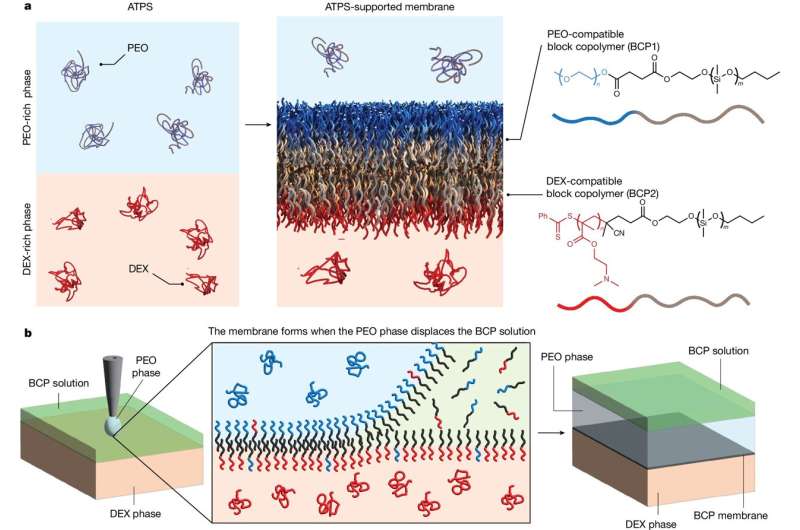Self-assembly of BCP bilayers supported by an ATPS. Credit: Nature (2024). DOI: 10.1038/s41586-024-07481-2
A groundbreaking technique has been developed by researchers at the Adolphe Merkle Institute (AMI) and their global partners to create innovative thin membranes that imitate biological cell membranes. This breakthrough has the potential to revolutionize various industries, from artificial electric organs to water desalination.
Utilizing an aqueous two-phase system interface, the researchers have successfully formed and stabilized these membranes. Through precise control of the interactions between two incompatible water-based solutions and the membranes, they have achieved membranes that are only 35 nanometers thick but can cover large areas exceeding 10 square centimeters flawlessly.
“This method capitalizes on favorable interactions to stabilize ultra-thin self-assembled structures on a scale previously unattainable,” explained Assistant Prof. Alessandro Ianiro, a former leader in AMI’s Biophysics lab.
The technique involves block copolymers (BCPs), versatile polymers with multiple distinct segments, to create a bilayer at the phase interface. These resulting membranes possess exceptional mechanical strength and self-repair capabilities, ensuring their resilience and longevity in practical applications.
These synthetic membranes mimic the ion transport selectivity of natural cell membranes. By integrating a natural transport peptide, the membranes exhibit high ion selectivity, enabling them to produce electricity from various salt solutions. This functionality is inspired by the electric organs of rays and other electric fish that utilize similar principles for power generation.
Published in the prestigious journal Nature, this advancement holds promise for diverse fields. In energy storage, these membranes could facilitate the creation of large-scale devices for storing electrical energy. In water desalination, they could serve as highly selective barriers for efficient ion separation from water.
2024-06-05 11:00:03
Original source: phys.org




















